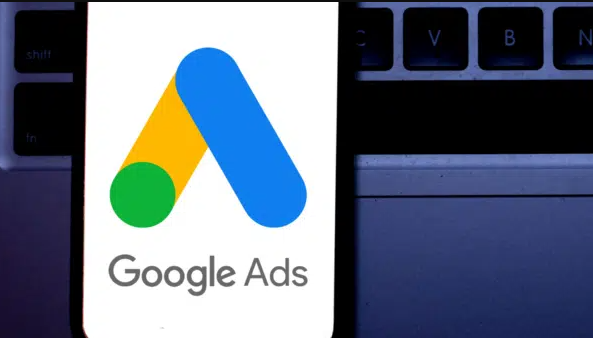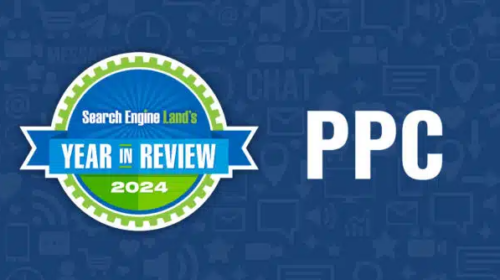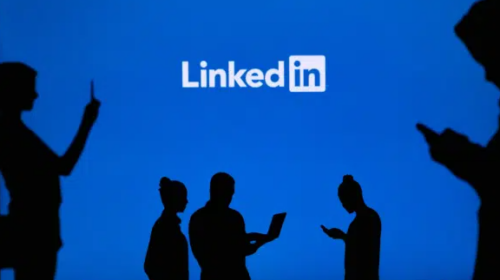How each Google Ads bid strategy influences campaign success
Learn when and how to apply Manual CPC, Maximize Clicks, Target Impression Share, and Smart Bidding to meet your Google Ads campaign goals.
Even experienced PPC advertisers can struggle with bid strategies in Google Ads.
There are over half a dozen options, each serving different objectives and use cases. You can easily lose track of when to use what.
Each bid strategy gives Google’s systems a different mandate around spend, target metrics and profit. Media buyers constantly bounce from one bid strategy to the next, and it’s not uncommon for a campaign to switch between strategies depending on where it’s at in the lifecycle.
Save this guide as your main resource for understanding which bid strategies to use, when and how to use them, and why they’re important.
1. Manual CPC
Manual cost-per-click (CPC) bidding is not really a place that I believe most campaigns want to stay, but it has two clear uses.
First is brand campaigns, where the goal is less about performance and more about making sure that searches for your brand end up on your website, not those of your competitors. With brand campaigns, you want to capture a certain amount of impression share.
- How many searches are there for my brand each month?
- Am I showing up at least 80-90% of the time?
- Am I capturing and profiting from these queries?
In my experience, you’re better off with Phrase and Exact Match when using manual bidding, while limiting Broad Match to just a few very relevant terms.
Broad Match is much more liberal and when you combine that with Smart Bidding, Google knows which of the 100 people searching for the same keyword are most likely to convert. They can tweak those bids in real time.
The other use case for Manual CPC is low-volume keywords, typically in lead generation campaigns. When you’re running a Search campaign and trying to stay profitable, but you don’t have a large budget and or a large enough data signal, manual bidding often works well.
If your budget is $50 a day and you start bidding $7 per click, and you see that you’re spending the full $50 a day, you can bid less per click. If that works, you keep lowering your bid until you see that Google is no longer spending the full budget. That’s when you know to push back in the other direction.
In those cases where you’re using manual bidding, it’s important to look at performance by device or time of day to see if you need to implement specific bid adjustments. I typically do this until I have enough conversion volume, and then I try to switch to Maximize Conversions or Target CPA.
Even with a limited budget, sufficient conversion data is my barometer for deciding to move to Smart Bidding. If I’m on manual bidding several months or years into a campaign’s lifetime, it’s because there truly are no better options.
2. Maximize Clicks
I use Maximize Clicks out of the gate when I want a campaign to simply spend its budget: Shopping, Search, and Dynamic Search. When I want to collect conversion data and speed up the learning process, I set it to Maximize Clicks for a few weeks.
The difference between Manual CPC and Maximize Clicks is the latter doesn’t give Google any limitations on how much to bid. You can set a bid cap, but the idea of this bid strategy is to simply exhaust a daily budget and get as many clicks as possible.
I recommend using it sparingly – only when your goal is to push traffic to collect data.
That being said, you might find it useful for upper-funnel campaigns focused on prospecting, such as Demand Gen or even certain Search campaigns where you want to generate new traffic from specific audiences.
Remember to take those results with a pinch of salt, because this bid strategy has no guardrails on the quality of clicks.
Dig deeper: Bidding and bid adjustments in paid search campaigns
3. Target Impression Share
Target Impression Share has only one use case, in my opinion: Branded search. I’m sure there are other scenarios where it makes sense to different folks.
The goal of branded search is maintaining visibility – you don’t want that traffic to wind up on a competitor’s site. If the traffic converts, it converts; Smart Bidding is not really going to influence the level of intent.
When you show up 90% of the time and capture 90% of clicks, there’s no reason to use a CPA or ROAS target. Both of those will push aggressively and make you pay more for a click that you can buy for much less.
Again, make sure you’re only using Phrase and Exact Match, or the system will go overboard.
Don’t use this strategy if the play is to get more of your competitor’s impression share. Bidding on your own brand means you have high relevance, so you get cheaper CPCs than your competitors.
Now flip that equation: You don’t have high relevance for your competitor’s brand, so you’ll have to bid much more aggressively. In this situation, I’d use a CPA or ROAS target to make sure this tactic remains profitable.
4. Smart Bidding (and why I prioritize it)
My goal with most campaigns is to move toward some form of Smart Bidding eventually. Google has a tremendous amount of user data that influences its ability to push your account in the right direction, but you’ll never see that if you stick to manual bidding.
Many advertisers and media buyers are skeptical of Smart Bidding and have every right to be. But I don’t believe that campaigns that rely overly on manual controls will continue to deliver outsized results in the years to come.
Maximize Conversions (Target CPA) and Maximize Conversion Value (Target ROAS)
The difference between Google’s two primary Smart Bidding strategies is simple:
- Maximize Conversions focuses on the number of transactions or conversion actions
- Maximize Conversion Value focuses on any value that you provide (typically revenue)
What often ends up happening is lead gen service providers lean in on Maximize Conversions while ecommerce brands go for Maximize Conversion Value. But if you do lead generation and can import your offline conversion values – pipeline and sales data – then you can use Maximize Conversion Value to great effect.
The ultimate goal of Google Ads is to bid based on value, so that you can look at your cost versus revenue and optimize for profit margin.
With both bid strategies, you can include a target goal: CPA for Maximize Conversions and ROAS for Maximize Conversion Value.
Without these targets, you’re telling Google to spend your whole budget – whether that’s $100 a day or $100,000. And the system will try its best to do that while getting you as many conversions or conversion value as possible.
Give it a Target CPA or a Target ROAS, and you’re no longer telling the system its first objective is to spend the budget but to meet your goal while spending as much of the budget as possible within those confines.
For most campaigns seeking profitability, Maximize Conversions with Target CPA or Maximize Conversion Value with Target ROAS are typically where you want to get unless you have specific objectives around reach, frequency or metrics.
Finding the sweet spot for a ROAS or CPA target
There’s a science to finding the optimal ROAS or CPA target for Smart Bidding to work with.
I like to start either bid strategy with no target. This pushes it to spend and gather data, allowing me to establish a benchmark for what that target comes in. If the CPA is $100 and I want it to be less, I set the target to $95 and see how much I can still spend.
If I still get full use of my daily budget, I keep pulling it back slowly while seeing if I can still pull in a similar amount of traffic and conversions at a lower cost. Keep tweaking those metrics until it lands at a place that makes sense for you while following these best practices:
- Reduce the target by no more than 10-20% at a time and give the system a few weeks to acclimatize. Accounts with more conversion data can get away with bigger and more frequent changes.
- Watch for the cliff. Maybe you’ll end up doing 90% of original volume while spending only 60-70% of the original spend (and still exhausting nearly the full daily budget). Maybe you’ll see a massive drop and need to roll it back.
- Lower your bids whenever a campaign is reaching its daily budget every single day. You do this on Smart Bidding by lowering your Target CPA or increasing your Target ROAS, which changes the ultimate bid that goes into the auction. If your campaign is set to $100 a day and spends $105 every day, you can likely lower your bids.
Value-based bidding
With Maximize Conversion Value, Google gives you the opportunity to feed it with business data that illustrates which leads are most valuable to you.
While it’s often used by ecommerce businesses that quantify the dollar value of things, it can also be used in lead generation.
The simplest way to do this is for lead gen is to:
- Understand your brand’s full sales funnel – how prospects become leads, how leads become qualified leads, how qualified leads become opportunities, and how opportunities become sales.
- Work with your team or clients to determine what a sale is worth, then work backward through the funnel, noting down the typical conversion rates from one stage to the next. If you do this right, you can determine the value of a conversion in Google Ads based on how much revenue a deal generates.
- Use offline conversions to manually or automatically feed that information and those values back into Google Ads, allowing the system to find more of the kinds of leads that lead to closed deals, signed contracts and money in the bank.
Additionally, Conversion Value Rules lets you add positive and negative weightage to locations, devices and audiences, effectively serving as another layer of bid adjustments for Smart Bidding.
Dig deeper: Value-based bidding: Why it’s key to boosting your Google Ads
Match bid strategy to your campaign’s goals
I’m pro-Smart Bidding and pro-automation in general. However, I understand that thousands of Google Ads marketers still prefer the old-school method of controlling everything themselves.
Ultimately, it’s important that we’re all able to do what’s best for our clients and brands. That’s why I believe the most essential part of picking a bid strategy is lining it up with what you want to achieve.
Performance Max, for example, only allows you to use Smart Bidding and is a poor fit for accounts with limited conversion data. If you aren’t willing to adapt, stick to Manual CPC and its limits.
Criticism of automation and AI is fair when it’s in the right context, but for those using these new technologies with the right support and setup, better performance is a question of “when” rather than “if”.





